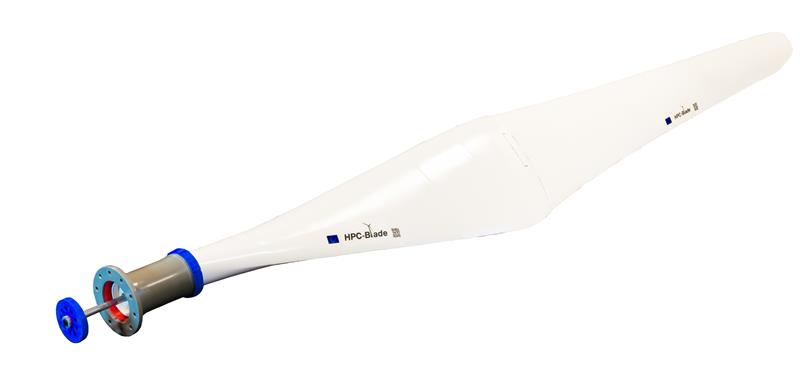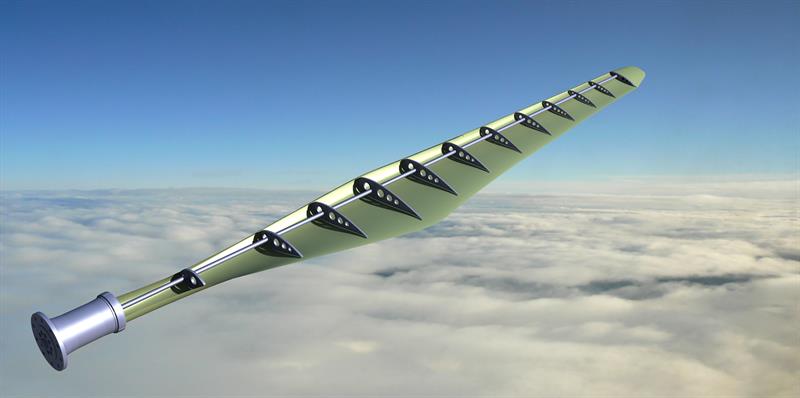Wind energy was first harnessed to generate electricity by a Scotsman, James Blyth, 130 years ago. It is only the last couple of decades that have seen widespread use of wind turbines and the UK played a significant role in the development of the technology behind it. However, in stereotypical fashion, the companies who have commercialised this technology are not British, but instead hail from such countries as Denmark, Germany and China.
Despite impressive uptake of wind energy – it has risen from about 1% to 12% of the UK’s energy generation over the last decade - acceptance of the turbine design as optimal has meant that it has changed little in recent years.
Wind tunnel and CFD analysis has resulted in turbine blade profiles that warrant this industry acceptance. But there is more to the blade than just its profile and one company, Jigsaw Structures, is challenging the fundamental design.
The company, under its former name of eStress, has provided stress consultancy to the aerospace industry for the last quarter of a century, but five years ago it started to invest in its own R&D. The company’s Christophe Vaissière stated: “It was an idea that we’d had on the back burner for a while - we saw an opportunity for a particular concept within the bi-blade sector. We managed to set up a European consortium supported by the Framework 7 funding, which is a two year project. The object of the funding wasn’t necessarily to take it to market, it was to validate a concept through a test case - building and testing a blade so that we could bring a bit of substance to our concept, which until then was theoretical.”
An important part of this project was development of a software design tool which allows the concept to be scaled up and down. The next stage was to select and make a blade of appropriate size for the available budget. Jigsaw has named the blade the HPC (High Performance Composite).
 “We built these prototypes and were able to do some validation through bench testing,” said Vaissière. “The main aspect of our innovation is the structural configuration of the blade, which is quite a departure from existing structures. We’ve had failure modes, locations and intensity levels, applied to a level which was within a few percent of what we predicted, so we’re very happy with the result. The concept is, we feel, validated.”
“We built these prototypes and were able to do some validation through bench testing,” said Vaissière. “The main aspect of our innovation is the structural configuration of the blade, which is quite a departure from existing structures. We’ve had failure modes, locations and intensity levels, applied to a level which was within a few percent of what we predicted, so we’re very happy with the result. The concept is, we feel, validated.”
The concept involves making full use of the blade surface from a structural perspective. Traditionally wind turbine blades have a single or double I-beams running the length of the blade providing all of its structural integrity. The job of the blade surface, the skin, is to collect the load and transmit it effectively through the blade to the hub. “We took a look from our perspective in the aerospace industry,” claimed Vaissière. “And what we introduce here is the ability to make the skin part of the structure and therefore, we can minimise any redundancy. We have a structural skin and the way we enable the skin to be structural, effective, is by the presence of ribs. Without the ribs, you’re not engaging the structure.”
In traditional blades, which might have large areas of the skin attached to the I-beam, not every bit of the structure contributes to its stiffness, so extra weight is being carried that is not serving a useful purpose.
Vaissière explained: “With the HPC blade concept we’re trying to take full advantage of the good properties of a composite, and trying to make every bit of structure work efficiently. This is the way it’s gone on the aircraft wing as well. As a result of that is we have a much lighter blade, around 20% lighter than an equivalent. Also we’re looking at simplifying manufacturing processes and we’re looking at around 10% saving in the way the blade is constructed.”
The role of the ribs is to maintain the shape as the effectiveness of the blade is lost as soon as the shape is compromised. It is imperative that the ribs are in the right place and that is role of the design software Jigsaw has developed. The ribs are made of Tufnol, which is light, cheap and complies with the carbon fibre structural skin of the blade with respect to thermal expansion characteristics.
“The other problem with existing wind turbine blades is they end up being usually quite large at the root - big thick  composites,” continued Vaissière.“The reason why they’re fairly thick is they need rod inserts to connect to a metal interface. You end up carrying a lot of weight at the end because you’ve got all the problems associated with trying to join two materials that fundamentally are not behaving in the same way.”
composites,” continued Vaissière.“The reason why they’re fairly thick is they need rod inserts to connect to a metal interface. You end up carrying a lot of weight at the end because you’ve got all the problems associated with trying to join two materials that fundamentally are not behaving in the same way.”
An underlying principle here, when dealing with special materials, was to transmit the load using contact rather than by mechanical connections or adhesives. It essentially involves in having a metal strut with a sleeve made of the special material, carbon fibre in this case. “It is a kinder way of introducing load into the special material,” said Vaissière.
Tim Evans, Vaissière’s colleague at Jigsaw, introduced another aspect of the concept: “The HPC blade is two innovations into one. The first innovation is introducing efficient structures structural skins, but also we have introduced a mini spar, we call it a reference tube, which has two functions. The first, because you locate the ribs onto it, defines your blade like a fishbone. It also allows us to introduce a failsafe device which is not at present on the line of current designs as well.So in the event of the blade failing all you need is this cable or a rod to keep your blade on the rotor.”
So why have no turbine manufacturers picked up on this before? Evans said: “I think one element is to do with inertia within the industry. If you’re one of the key players in the wind turbine industry, why would you change to something new when you’re doing okay commercially? Conversely, one of the challenges that they all face is how to economically produce larger and longer blades as that is one obvious way of being able to extend the capacity. To do this you need to improve the structural form - I think the testing that we’ve done demonstrates that we can economically and sensibly introduce ribs to achieve this.”





